Pixelfed account: https://pxlmo.com/buffy
- 62 Posts
- 92 Comments
 1·3 months ago
1·3 months agoYeah, you definitely start to find the spots where you need to fill in the gaps. I find that the middle of the focal range is where I notice the biggest need for primes. That 14-42mm is handling most of the “wide to normal” for me right now since I’m not doing full on portraits with this particular camera… if I was I’d probably look into something in the 35mm or 55mm super fast lenses specifically for that task.
Well, yes. I do need to find the spots where I need to fill in the gaps and this will require some (significant) experience. I’m always reading a lot about stuff, and there’s too much to learn regarding photography, still. For instance, I was trying to shoot the milky way this weekend under Bortle class 2 skies. The results were good, but not exactly great. I was thinking “yeah maybe a fast and wide lens will do”. Now, I’ve read that people actually tend to stitch mid-focal length individual shots together instead. That’s when photos actually look good, not so much when using those nice, fast, wide primes like the famous Rokinon or Simga lenses. Quite the surprise to me, honestly. That is just an example to illustrate my point, which is, there is usually a right(er) answer, but rarely an easy answer.
Regarding portraits, I used to like the strong bokeh of fast primes on a DSLR since my mom got a 50mm f1.8 for my old Canon years ago, but recently I’ve learned to appreciate short telephotos, too. 42mm gets you ~85mm equivalent, which is quite nice, just not very creamy at those apertures. I agree with your comment that it would only make sense if you were to get a 7artisans 55mm f1.4 or something.
With birding I’ve never been able to deal with primes since things change so quickly…
Yes, I too would use the whole 150-600mm range on my Tamron/Nikon all the time for birds. I think it’s a known fact that for wildlife one gets primes for increased sharpness, but knowing that you will have to crop very frequently. And when you crop to the equivalent increased focal length on the zoom, you don’t get the increased sharpness advantage. It’s mostly a budget game, I think.
I would also suggest start looking around for extra batteries.
Agreed. I’m looking into buying a kit from Kastar (2-4 batteries plus USB charger), which is selling for $40-$70. As a matter of fact, cheaper than a single OEM battery ($80). Go figure. On my Nikon, two batteries would last me 3-4 days outside while backpacking (in theory, ~1000 shots). The EM-1 Mark II is rated for 440 shots per battery, so I think the OEM plus 2 extra will suffice. USB-C charging is a must, because that’s what I use to charge my action camera’s batteries and other devices using my portable power bank. I think a kit from Kastar will do.
It’s been really nice so I can either carry a spare or just swap the low battery for a new one when I get home and not have to wait for any charging.
Also agree. On a day or half a day out shooting, I usually use half a battery, swap it when I get home, and let the other one charge. It’s simply practical.
I’m waiting for my Olympus 14-42 electronic zoom to arrive, which should be here on Monday. My next steps will probably be the extra batteries. Then, a Lumix 100-300mm for wildlife (or equivalent). I’m (really) excited to see where this is gonna take me. Look at this, selling a couple of Nikon F lenses to fund a completely new system – relatively small changes in practice and likely not changing the end result much, yet such a different approach to the hobby. I feel like this journey is going to be fun!
 1·3 months ago
1·3 months agoAbsolutely where I ended up. I knew I could get myself in at a certain point and then upgrade and swap things around later as needed, so it wouldn’t be wasted. I’ve been getting really good deals on some quality budget glass for the olympus.
It is definitely true that money spent on Sony isn’t wasted money. But at the same time, I was thinking, what’s the point of spending $900 or more on lenses, and end up using them on an entry-level body? I don’t know, it felt to me that it’s better to save instead and get a higher-end camera and glass at once. Sony full frame must be so nice, especially for video, but I’ll have to wait for now.
What I said above is definitely not the case for M43. I’ve just bought the tiny 14-42mm kit lens and it’s set me back $500 for the whole initial setup (body + kit lens, including tax). With a longer telephoto (Olympus 75-300 or similar, ~$300), it will cover most of my use cases. For the price of either a nice Sony lens or body. And it’s a camera that used to be their flagship model, so I feel good about the deal I got. It’s very clear that you don’t need to spend much to get the good stuff. Your hummingbird photo is a great example of the good stuff you can get out of a lens; affordable glass yielding a nice reach, sharpness, optical quality, and pleasant subject-background separation.
The only thing about those super zooms like the 14-150 is that you can sometimes sacrifice quality.
This is something that bugs me slightly about my 18-200 Nikon F DX (APS-C) lens. It is an awesome lens that I’m currently taking everywhere, but I wish it was sharper at times. I guess I will need to get used to switching lenses more often than I currently do. I also might want to experiment with sticking more to fixed focal lengths again. I noticed I always shoot at 28, 35, 50, 85, and very occasionally 105, 135mm full frame equivalent. 300mm or longer for wildlife. Needless to say, those are the most appealing focal ranges to most people and unsurprisingly, there are primes for all single focal length within this range. I’ll look into my EXIF data and see what I can stick to initially, and try to zoom more with my feet. It will be an interesting journey!
I got myself a little camera bag that’s like 12 x 8 x 5 with a cross body shoulder strap for idk… $15-20 online. It holds the camera, the lenses, the flash, the cleaning kit, the filters, the batteries, the charger, and the filters… and there’s still room left lol. So Carrying a bunch of M43 lenses is super easy and light weight. Doesn’t make me feel like I need to worry about super zoom coverage like I did with my canon. Always boils down to what kind of photos you think you’ll be taking. My tactic was to get the 14-42mm based on recommendations online as a “walking in the park lens” to get used to the camera and then I’ve just been filling in the blanks as I go.
Yes, I still need to figure out a setup that would work for me. I’m currently using a crossbody bag to carry my Nikon and it works great. I will look into a similar setup that can hold the M43 camera and two lenses or so, plus two filters (CPL and ND), a lightweight tripod, and backup battery and storage. I’ll need to get an SD card for my new camera on Bestbuy, so I might look into what bags I can find there. For the card, I’m thinking about a Sandisk V30. I’m not sure about higher speeds, where I’ll be able to record high-bitrate 4K, but it does sound appealing. I’ll think about it while my lens is on its way.
Going on MPB and UPP and just poking around there’s so many fun lenses in that $60-150 range that it’s almost impulse purchases at that point.
I’ve read good things about the Laowa 7.5 f/2 and Lumix 9mm f/1.7. I might get one of those two in the future as a wide-angle low-light. Or maybe either a 17mm or 25mm prime, since 35-50mm full frame equivalent looks very pleasing to me, as it does to most people. We’ll see how it goes with the kit lens. I feel like a wider fast prime would be more useful, though, given that it would serve two distinct purposes.
It’s been interesting for me. For fast action in lower light… there is no escaping needing good sensors and fast lenses. But because of the IBIS and some of the fun tools olympus puts in their camera software (live composite is so cool… pretty sure the one you’re getting has that)… I have been able to take stills in lower light by using longer exposures and still getting cleaner shots. So I had to kind of reset how I thought about the exposure triangle settings.
I’m sure it does, since Nikon’s optical stabilization technology from 2006 already goes a long way. I still think I’ll get a fast and wide prime, given that I’m very interested in wide apertures for astroscaping. But at the same time I’m not sure how well a M43 would perform capturing the northern lights, the milky way, or a meteor shower.
I’m excited for you. Using this olympus from 2015 has convinced me that I absolutely want to get a modern flagship M43 camera at some point.
I’m pretty excited, too. I keep thinking about the new possibilities that might arise with this camera. This weekend, I shot a huge bull moose, 200mm cropped, handheld, optical stabilization only, on manual focus, at 1080p. The video turned out great, regardless. I am excited to try the same thing with IBIS, 4K, longer reach, and autofocus/focus peaking now!
 1·3 months ago
1·3 months agoAfter careful consideration, I’ve got a used E-M1 Mark II from my local shop. I found it for fairly cheap ($300, plus $80 for 1 year warranty and tax). I decided to pass on the GX85 ($400 for body-only) and G85 ($500 including the general purpose kit lens + tele kit lens), despite the great price. Mostly because of my awful experience with contrast AF, where it was unusable compared to phase-detect AF on my D3200.
I found a Sony A6100+kit lens for $440 (amazing deal), but after looking into their lenses, I felt like they were too expensive to the point where it wasn’t really worth it getting an entry-level camera. You know, with Sony you really need to go big or go home, unlike M43 where quality glass can be affordable. Basically, if I were to buy an $800 lens, it wouldn’t make sense to skimp on the body. I still plan on getting a Sony in the future, but I’ll probably save for a nice full frame (A7III, A7C, etc) or higher-end APS-C (A6600) instead.
I still don’t own any M43 lenses to test the camera outside, but I’m inclined to get:
- Compact kit like the lens you own (14-42mm);
- All-purpose kit for travel/hiking (14-150mm or something);
- To be determined between: fast and manual prime (wider angle, ~9-17mm-ish), long reach telephoto (~300mm-ish), or macro (~60mm-ish).
I will order the first lens now, and think things through for the next two possibilities. I honestly don’t know how wide of an aperture I’ll need yet, but I’ll likely have an idea after feeling how the camera performs in low light with the kit lens.
I will keep you posted and update the original post soon relating my experience!

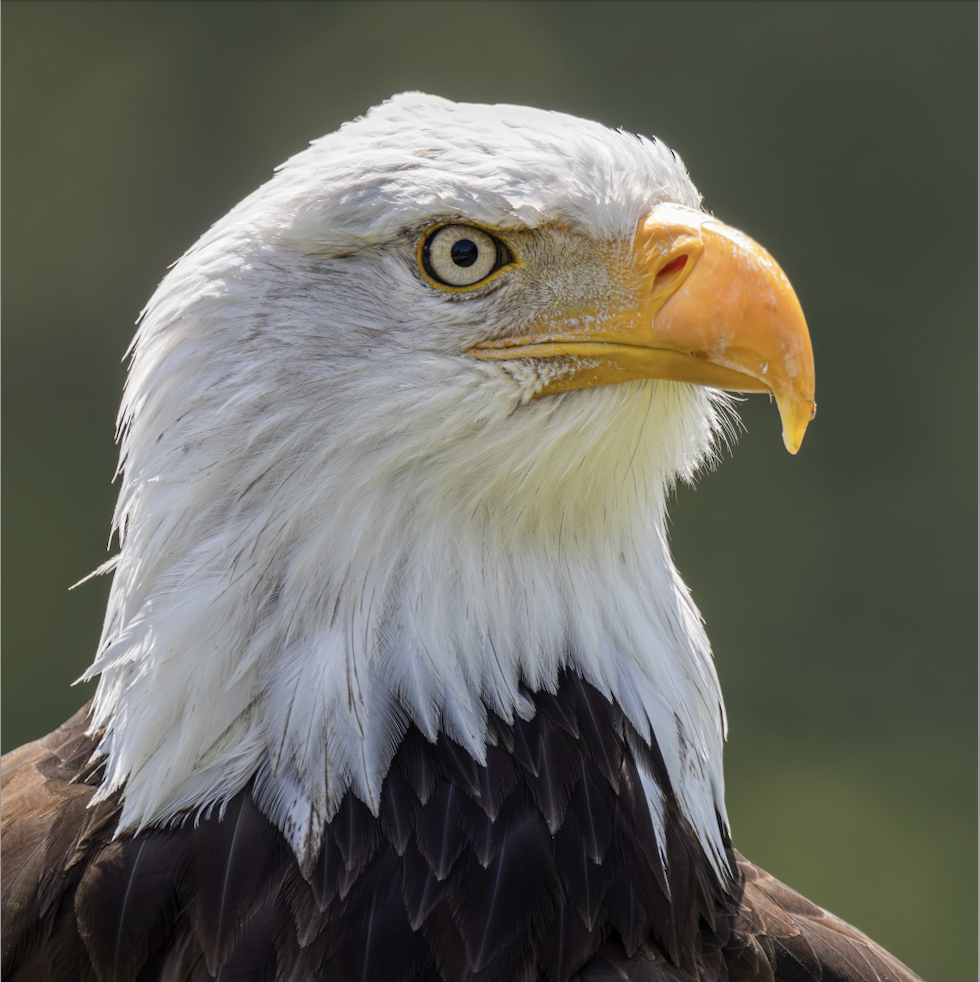 2·3 months ago
2·3 months agoThanks! It’s always nice to see a Steller’s Jay, gotta love their mohawks and beautiful colors!
 2·3 months ago
2·3 months agoI am not familiar with super long reach photography, but I love telescopes. As a matter of fact, the latest DPReview photography challenge winner got the shot using a M43 camera with a telescope. Maybe you could look into digiscoping for your next trip if you need insane magnifications like 1200mm-3000mm or more. That should be way cheaper than a modern, high quality lens with extra features like stabilization and blazing fast autofocus.
My pleasure. I’m looking forward to seeing your posts if you ever feel like sharing. If you have any questions, you can ask them here and I’d be happy to help!

 1·3 months ago
1·3 months agoOh, of course I’m not comparing them to those forsaken seabirds!

 2·3 months ago
2·3 months agoI actually think something like that was happening when I took this picture. The park was full of birds and the jays were all hanging out together, collectively making a lot of noise seemingly out of nowhere.
Bear in mind that I’m not a pro and I’m a hobbyist with “entry-level” equipment that I bought more than 10 years ago, even though I started shooting birds the past year or so. I’m commenting to add the perspective of a person who just happens to casually photograph birds on weekends.
I mostly use a Nikon D3200 APS-C with a kit lens (18-200mm), but I’ve had a Sigma 18-300mm and a Tamron 150-600mm in the past.
First thing that might surprise you, I end up with way less keepers than a person with reliable autofocus and good low-light performance.
Second, you do need to get pretty close most of the time, regardless of reach, especially for small birds. Usually, I will take “safer” shots and approach the bird slowly, trying to achieve the frame that I want.
Here’s an example of a “safer shot”, straight out of camera (using the 18-200mm lens):
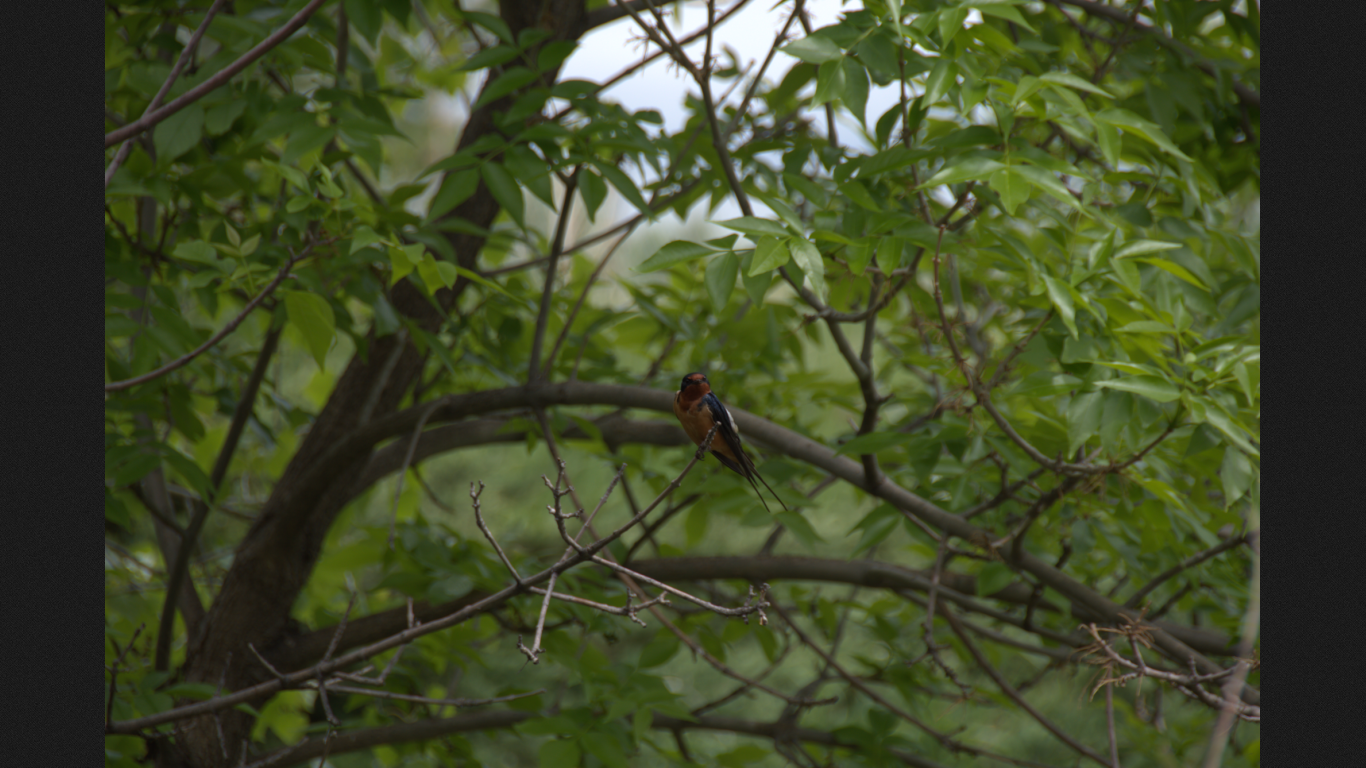
I could walk forward two more steps to improve framing, before I was limited by a creek in front of me,
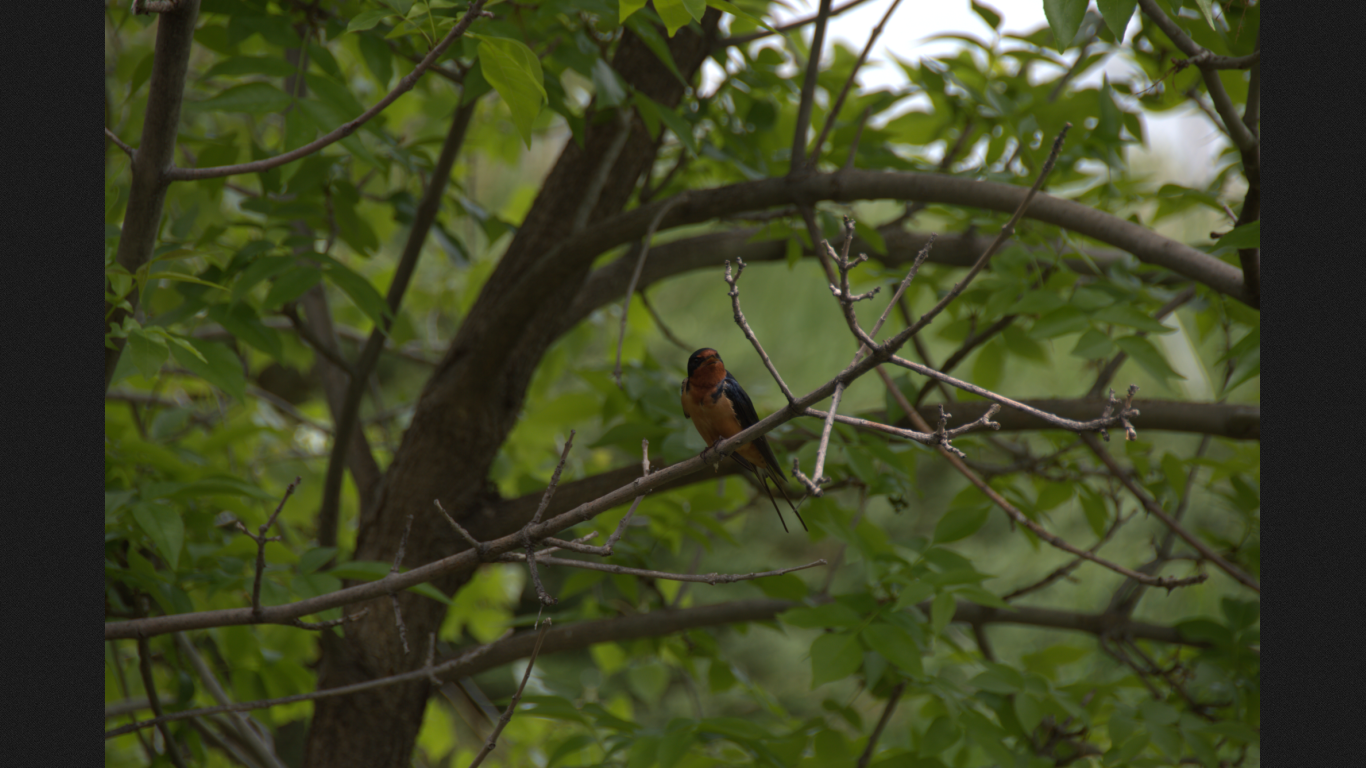
The final shot, illustrating how much I usually crop

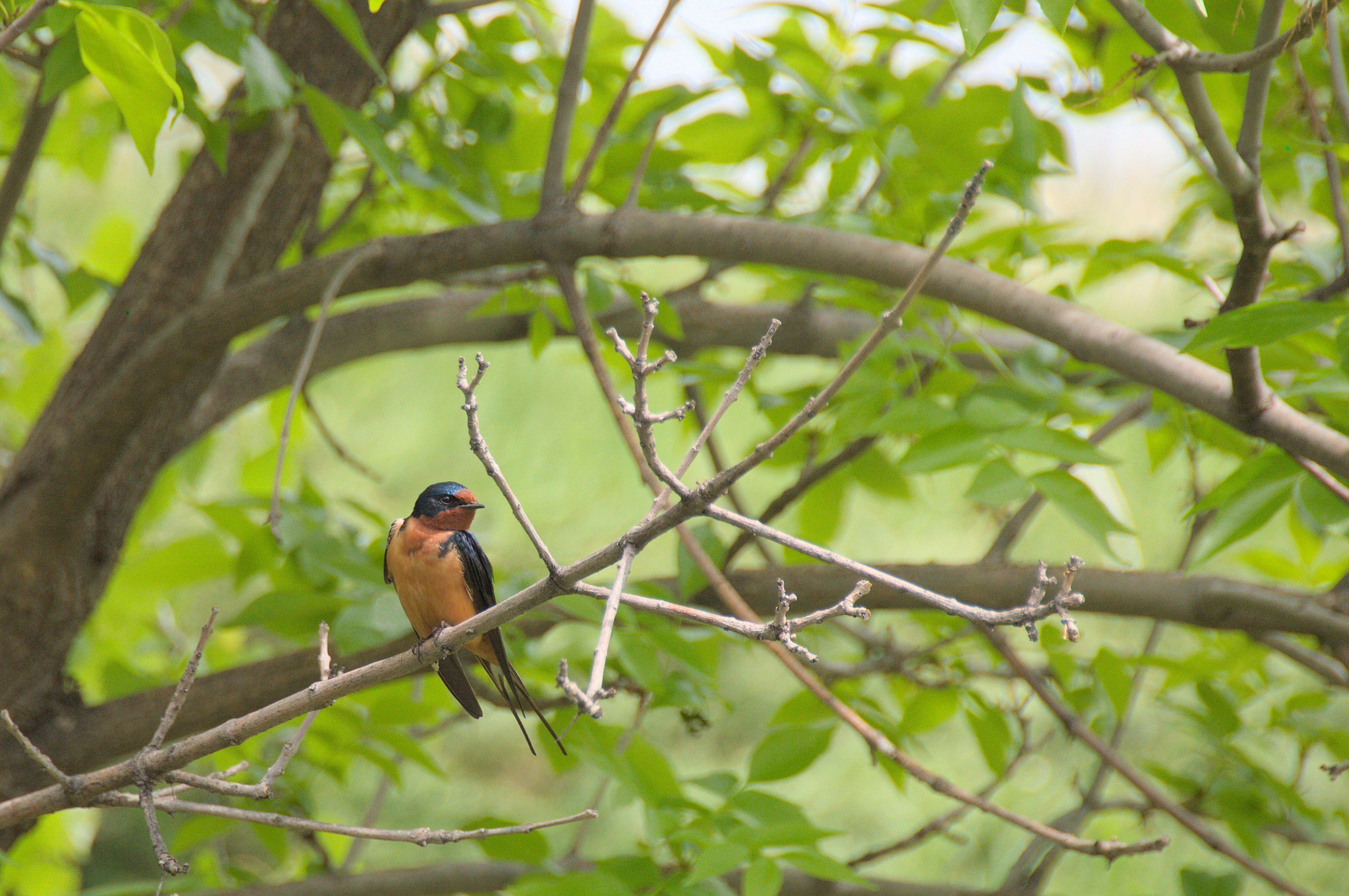
Using the same Barn Swallow location as an example, I know from experience that they perch there if I “come early” and wait standing still for long enough (~15 minutes). So that’s what I did when I went there the other day, standing at the same spot, but using the Tamron 150-600mm instead. This time, I didn’t have to crop, since I pre-framed my picture, knowing their approximate size and that they would be there sooner or later.
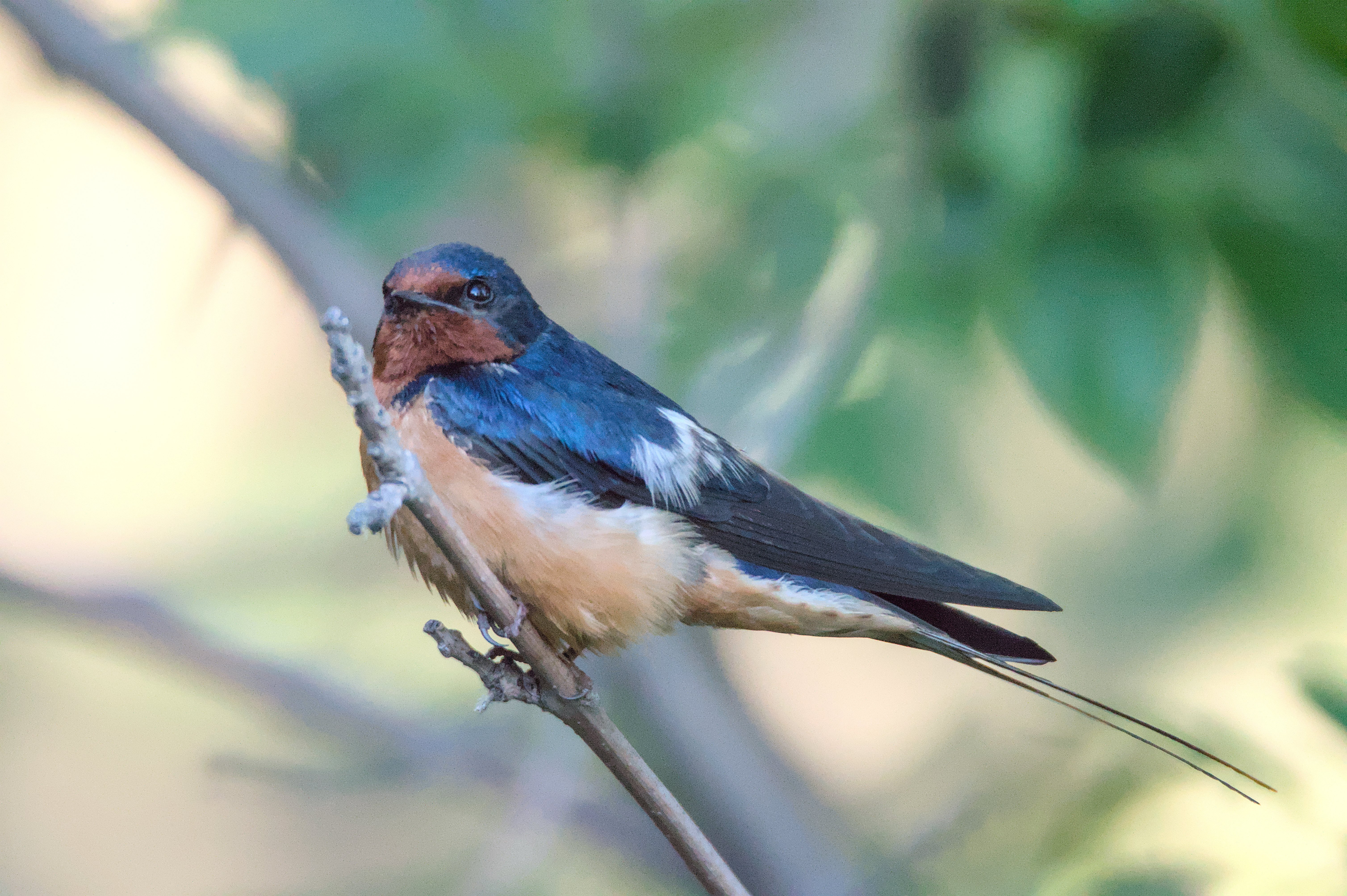
There are situations where you need to crop a bit more, especially for birds that are both small and fast.
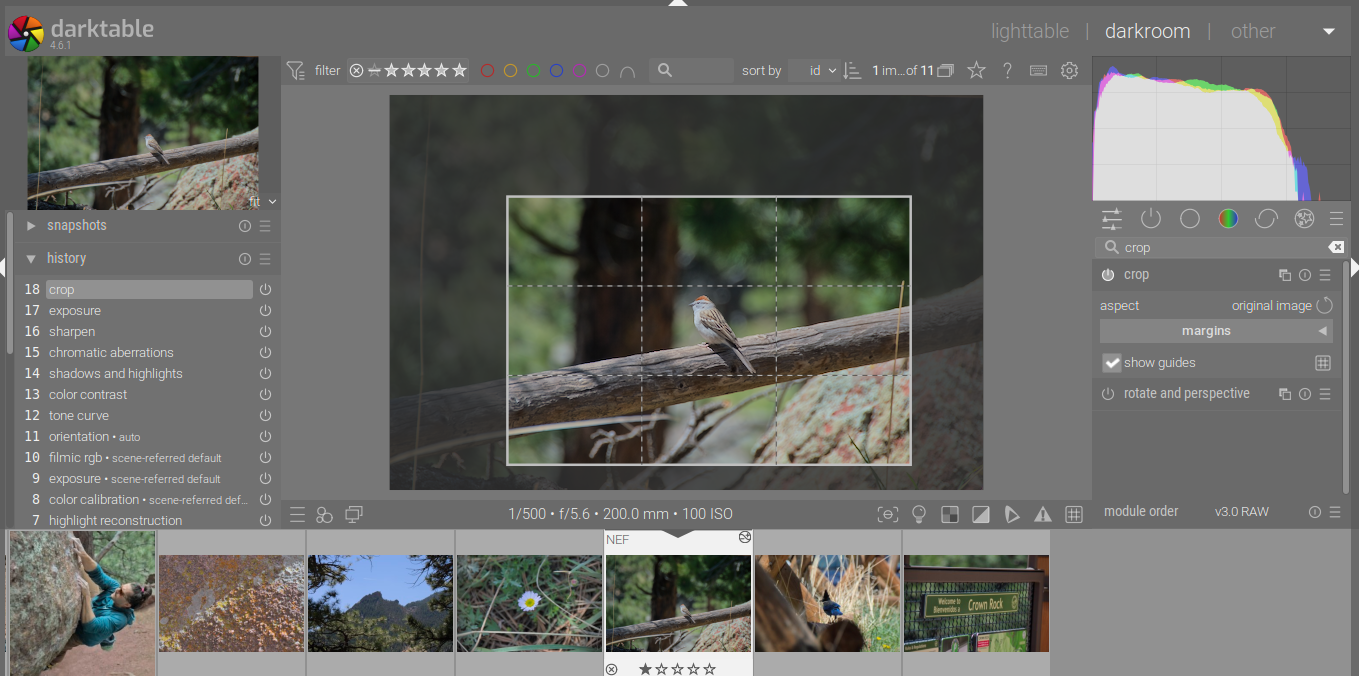
It took me close to 30 minutes to take this photo (D3200 + 18-200mm), since the chipping sparrows were zipping around, so I had to patiently wait for one to be within reach. I took exactly 6 pictures, two steps, lay down on the ground, one shot, two steps, lay down on the ground, one shot, repeat. Until the bird flew away.
I would say 200mm on cropped (300mm full frame equivalent) is when you can start to get good pictures: challenging but doable. 300mm on cropped is fairly nice (450mm equivalent). I don’t think there are crazy improvements from 450mm–600mm, since 450mm is already nice for larger birds like jays or blackbirds, and ~500mm may be too short to reliably capture some smaller songbirds. 800mm or so is the longest I’ve tried and IMO it would be very challenging to have good enough technique to pull it off beyond that.
Of course, a person with a high-resolution, low-light beast will be able to crop more aggressively than I do. Especially if they just post their pictures online, where basically anything at 2MP or so will do.

 3·3 months ago
3·3 months agoOh yes! Here they can be really shy when they’re not in the mood, but on chatty days, oh boy, they will be caw, caw, caw, caw staring at you the whole afternoon.
 2·3 months ago
2·3 months agoI’ve been watching an insane amount of M43 videos lately.
Right now, I kind of feel like that the performance beast (high image quality days) + pocket rangefinder (travel or daily carry) is a really attractive setup, like Lumix G9 plus GX85, or E-M1X plus E-M5 III. I also found that I can indeed get all the lenses that I want (with professional quality) for under $2k (wide kit, two fast primes, macro, telephoto). Yes, that whole setup would be really light and small, to the point where camera and two or three lenses can be inconspicuously carried around in pockets.
I don’t want to spend a ton, but I also think that I should “go big or go home”. I want to feel the improvement, but without breaking the bank. Basically, my options remain the same (E-M5 III, GX85, etc). I’m trying to find something close to ~$500, and I’ll make a final decision after KEH pays me if they really are keeping my Nikon lenses.
That bee photo I posted was that lens… the MFD is like 9 inches.
That was honestly great, I’m impressed. I’ve seen macro photos people have taken on M43, and they look great all the way from wide-angle to telephoto range. I guess the deeper depth of field and image stabilization is a huge plus for handheld macro, even though a full frame setup (with a different lens) will clearly capture more light and push the ISO further (or use a flash).
I don’t know sony line-up at all really. The M43 side has some really cheap (even brand new) zooms that are well reviewed. a lot of the 40ish-140ish range (before 2x). Kind of puts you into that 70-300mm equivalency
Yes, I would aim for 450mm+ full frame equivalent. From experience, I feel like 450mm in full frame is great, 600mm isn’t much of an upgrade, and 800mm is awesome (but heavy).
For Sony, the best I could do on a budget would be the Tamron 70-300mm ($500 new, say $350 used) and the Sigma 100-400mm ($850 new, say $600 used).
For M43, there’s the Olympus 75-300mm ($550 new, say $400 used) and the Panasonic 100-300mm ($650 new, say $500 used).
Options aren’t bad for either, considering crop factor, size, and price. I would say they are virtually tied, with APS-C having a slight edge on image quality and video autofocus, and M43 winning on either reach (considering the 70-300mm) or weight and bulk (considering the 100-400mm without the hood) .
I would probably get one of those “do-it-all” lenses you’re talking about, as well. They would be great travel assets, I think. But to be honest, I’m unsure how much of an improvement that would be, considering that carrying a wide plus a telephoto lenses is no big deal anyway if they are M43.
Something else I was going to bring up… there are a lot of camera and lens rental shops around… depending on prices you might be able to rent something to test out if they keep it in stock. Might be that these cameras are too old… IDK.
Unfortunately, shops around me only rent full frame flagship legends, so I’m out of luck. There’s a local Olympus “borrow our equipment for free for 4 days” program, though. But they only lend their newest releases. I couldn’t find an option to borrow both an OM-5 body and an all-purpose lens. Tomorrow I’ll call them and see if that’s possible.
Another thing is you might find after a year of using that this or that feature is lacking or unused or whatever
That’s exactly why I’m hesitant to commit to one system or the other. I’m asking myself “do I really need something this light and tiny? Maybe I don’t, perhaps my current setup is already small enough and I won’t care much about a smaller camera. But maybe I do, and it will be a game changer when I realize it”. The same thing for creepy Sony eye-tracking autofocus. Who knows if I will simply not care or absolutely love it. There’s a possibility that I’ll hate Panasonic contrast-only autofocus (I know it’s straight up unusable on my Nikon D3200, while the D500 puts every other camera out there to shame). I might also not care the least and even forget that I don’t have phase contrast AF. Well, the list goes on and on; IBIS, high-resolution mode, focus stacking, bracketing, flippy screen, yadda yadda yadda.
I guess I’ll only find out when I pull the trigger on one of those. Options are too volatile right now, on all platforms: Craigslist, eBay, Roberts Camera, KEH, MPB, etc. I’ll have consider my options carefully when I get my money from KEH.
What I’ve seen is,
- Panasonic, there’s a GX85 selling for $400 locally (craigslist), and a GX8 for $500+tax (local shop).
- Olympus, UsedPhotoPro is the best, with a fairly used E-M5 III for ~$450+tax and refurbished for $635+tax.
- Sony, A6400 for $610-$650 occasionally popping up on KEH, or the A6100 occasionally available for $500 on eBay.
I’ll start with one of those bodes plus an all-purpose wide to mid range zoom and see how I like it for “everyday” stuff.
 1·4 months ago
1·4 months agoHa, nice comparison between the huge Canon and the tiny Olympus.
The EM5 was just a tad too small for my hand but I got a little, inexpensive handle that adds like a centimeter to the bottom and a bit of a grip and now it’s great to hold one handed
I’ve definitely seen people selling bodies with those handles on Craigslist. From what I’ve noticed, they are pretty popular as a modular solution to improve handling. I’ll definitely look into getting one regardless of my ultimate choice, since it will be a small camera.
Also, I’m aware of the Olympus vs Panasonic IBIS stuff, it is definitely something I’m taking into consideration because I guess IBIS might be better than OIS in general for the reasons you mentioned. The GX8 has IBIS, but I’m sure it pales in comparison to the E-M5iii (5 axis). I agree that it is great to just be able to add a more powerful body (like the G9ii) to your setup without having to use different lenses. Big plus for M43, since there’s no difference in sensor size.
You mentioned
It might be worth considering having more than one camera as the end goal.
This is what I’m starting to realize. I’m definitely inclined to try out both Sony and M43 because they both shine at their own individual strengths. As you said, a rangefinder-style body is very nice as an EDC, while a bigger SLR style camera would do well for shooting-only days. It’s great that you mention 7artisans and Laowa, those look like a lot of fun to me, definitely one of the reasons I want to switch to mirrorless.
At the moment, I’m trying to decide between Sony A6x00 (A6100 or A6400), or M43, either GX8 or E-M5iii. My local shop has a used GX8 available that I will probably check out. If I were to get a Sony or Olympus, it would have to be through MPB or UsedPhotoPro due to availability. I’ll think about it and make a decision. My starting point would be one of the three options below:
- Sony A6100 or A6400 + Sony E PZ 16-50mm f/3.5-5.6 OSS
- Olympus E-M5iii + Olympus M.Zuiko Digital ED 14-42mm f/3.5-5.6 EZ
- Panasonic GX8 + Panasonic Lumix G Vario 12-32mm f/3.5-5.6 ASPH Mega O.I.S.
Plus one budget telephoto for whatever “kit” I end up deciding to get. But I’m definitely inclined to invest in both systems in the long term.
About Peak Design,
and more importantly they have a “last call” for last years models that are being clearanced out as well as a certified and fully warrantied “pre-owned” section
That’s a great tip! I didn’t know that was a thing. I’m browsing their pre-owned section now, that’s actually amazing. Thank you for sharing!
Well, now I guess I’ll start considering those three options and I might update the post once I have a more informed opinion. I’m not too worried because I’m sure all those three options are great cameras. I’ll watch some videos and look at the side-by-side specs comparison spreadsheet more carefully.
Ha, so you’re implying my kids are going to grow up to be fertile adults with all the microplastics out there
 2·4 months ago
2·4 months agoOf course I like them. They are nice pictures!
I’ve actually just arrived from my trip to the camera store and I was amazed by how small those lenses are. I was expecting the M43 lenses to be rather small, but not that tiny! I can totally see how a full setup with a couple of lenses would fit in a small camera bag/insert.
Exposure bracketing is indeed something I wish I had. I assume I would use it all the time, because my snow and skies are blown out fairly often.
I think the wifi control is cool as well. I can do the same thing with my gopro and I love it. I can place the camera somewhere and just comfortably walk away and shoot from wherever I am!
The G9 looked appealing online, but after seeing it in-person today, I felt like the body looked to big compared to what I originally had in mind. I kind of want something pocketable when I’m not carrying a backpack with me. I don’t think I would mind hiking with it, though. We do similar distances and elevation gains, and I also use the capture clip and I have nothing to complain about it. But for day-to-day stuff, I might prefer something smaller.
I will definitely look into Panasonic cameras with the similar features but a smaller form factor, like the GX9. Thank you again for making yourself available and your willingness to help me!
 2·4 months ago
2·4 months agoI actually had the opportunity to check it out in-person today! It is a fantastic camera, impressive build quality and ergonomics. Buttons feel great and the image quality delivers. I feel like Sony is a great system because you go from compact, cropped rangefinder-style to amazing image quality, full frame SLR-style seamlessly. For now, I would prefer to stick to something smaller than the A7iii/iv, though. I was pretty pleased with the A6400. I am currently considering a model from the A6x00 (which I can later upgrade to an A7) or a mid-range M43.
 1·4 months ago
1·4 months agoMy next purchase if I were to keep the super telephoto would definitely be a big tripod/monopod combo. But I just sent it to KEH to fund the new body and lenses I’m getting. Let’s see how it goes. Thanks for the Peak Design strap recommendation. I have the clip and quick release anchor links, and I must say I love both accessories. I’ll make sure to check out the strap on my next trip to REI.
Regarding shooting video, there are basically two situations where I use the video mode:
-
Recording birds when it’s early or late in the day. For that, I would need low light performance. But even if the image is noisy, who cares. It bothers me more when my mic captures noise from other people around.
-
B-roll for my outdoor trips (biking, hiking, snow sports, etc) to complement my action camera stuff. My gopro sucks in low light anyway, so I don’t care if my B-roll video camera is going to suck as well. I shoot in 4K on it, so I feel like action videos with some cinematic depth of field from a mirrorless camera in 4K would look very nice as B-roll.
Actually, I just got back from my trip to the camera store to check out what they had available. I got to test Nikon, Sony, Olympus, and Panasonic. Basically all the camera models I had in mind.
- Nikon was the most ergonomic by far. Holding their cameras feels so comfortable and natural, it’s amazing. However, the moment I held the Z50, I noticed how it actually isn’t that much smaller compared to the D3200. I mean, yes, it is slightly smaller, but not “oh, now we pocketable”. So I checked out the Z5, which is roughly the same size as the Z50 anyway. “Go big or go home”, I guess. The full frame kit lens, however, is much bulkier than cropped. I figured the whole full frame setup wasn’t going to be small, but still it felt better than the Z50 in every other aspect. Buttons, for instance, are definitely a step up from cropped. Made more sense to me.
- Sony struck me as more interesting than Nikon. That’s because they have actually pocketable camera bodies for cropped (rangefinder style) and large bodies if we’re talking full frame (SLR style). The A7iv was roughly the same size as the Z5, but the A6400 is so compact (unlike the Z50) that it is actually pocketable with a pancake-ish lens. True, most of their lenses are not small, but I could see a smaller lens working well as a nifty setup with an A6x00 body.
- Olympus is actually rather impressive. Their bodies are so small and well-built, everything is smooth and easy to use. And yeah, those lenses are tiny. I was amazed by how compact they are. A full setup easily fits in a medium camera bag/insert. Sadly, it was the least ergonomic brand of all, but apart from that, I liked what I saw.
- Panasonic was exactly how I thought it would be. Those modern bodies are inexplicably bulky. I’m assuming that’s probably because of all the juice needed to handle heavy video loads. They are definitely catering to a different audience recently; the hybrid shooters who want cinematic video. If I were to get a Panasonic body, it would be an older, more compact model. Their build quality feels great, but the cameras are very big.
In summary, I have ruled out all bigger camera bodies for now. So, I’ll have to pick between Sony A6x00 series, Panasonic GX or Olympus E-M5. I’ll follow your advice and think about it further after checking out what sources like DPReview have to say.
-
 1·4 months ago
1·4 months agoYes, I can totally see someone owning a GX8/85 and an E-M1X and pushing both to their full potential with interchangeable lenses, taking advantage of individual strengths. Should be really fun to just grab whatever fits in your bag and bring it with you.
I also understand that the size difference between Sony full frame and Olympus M43 is ridiculous, despite bodies being the same size, if you consider the whole setup. I do own one of those huge full frame DSLR super telephoto lenses, and it isn’t exactly easy to shoot handheld. Doable, but less forgiving than a lighter setup. Moreover, I restrict its usage to birding almost exclusively, since it is a pain to carry that lens around. I’m sure image quality would be amazing if I had a nice full frame (or higher-end cropped) body to take full advantage of the lens for birding in challenging light, but I can’t help but wonder if I would bring the smaller (M43) telephoto lens with me more often if I had one. Especially so if I take into account those situations where I am not “just birding”, but walking around or hiking and I happen to spot cool birds that I’d love to photograph.
I like the flickr advice. I will check it out for sure. It should be especially helpful when comparing similar cameras. From what I’ve seen online from other sources, Sony in particular crushes M43 for low light video, but I haven’t noticed much of a difference in stills. I guess nowadays it all boils down to personal preference. Camera Conspiracies has talked about full frame vs M43 in good light and in low light. Even though he is sometimes hard to follow due to his sarcastic style, I found those videos to be a great resource.
Also, thank you for sharing that picture! Honestly, the high resolution mode looks great to me, I would have nothing to complain about it. I might actually consider a lower-end camera to start experimenting with another system, as another fellow commenter suggested I should do for Sony (to get an A6000).
 1·4 months ago
1·4 months agoThanks for the input! I am considering the A6400 and A7iii, given the amazing reviews they always get.
I don’t own many expensive Nikon lenses, but I am planning on selling the more expensive stuff that I have to switch systems. That shouldn’t really be a problem, since I got quotes from MPB and KEH that I’m happy with.
Sadly, you are spot on regarding micro four thirds and the path they are taking. If I’m not mistaken, Panasonic’s last compact micro four thirds camera was the GX-9, released in 2018. Olympus’ bodies are not smaller than other brands, either. Some of them even dwarf high-end, full frame DSLR bodies (e.g. E-M1X vs D750), while most are only slightly smaller than full frame mirrorless (e.g. E-M5iii vs A7iii). But honestly, something that bugs me a lot is exactly the situation that you were describing about your trip to Yellowstone. I live pretty close to the Rocky Mountain NP, so I’m there somewhat frequently. I must say, there were situations where I regret not bringing a long telephoto with me, and I own a nice one. I have a huge Tamron 150-600, but I can’t hike with it on top of all the outdoor gear I’m bringing, so I only use it when I’m not walking that much.
Olympus, for instance, sells the 75-300 lens which is ridiculously small for the reach you can get. Especially if you compare that to a Nikon F cropped plus 80-400 or full frame plus the 150-600, the difference in size is jarring. At the moment, the only equivalent solution I see for Sony is a cropped body with the new Tamron 70-300, which is comparable in size to the E-M5iii plus the 75-300. Which isn’t bad at all. I suspect this would be an image quality vs reach battle, where I could see either winning.
I also agree that micro four thirds is sadly becoming pricier and pricier. In contrast, the market for Sony cropped seems to be always hot.
Actually, I’ll see if my local store will have Sony and Olympus bodies in stock so I can try them out some time this week. I’ve only ever handled a Sony ZV-E10 camera, I’m curious to see how the A6x00 series feels.
 2·4 months ago
2·4 months agoI’m checking out your pictures and they do look great and sharp to me. It’s great to know that you don’t think it is a large camera to carry around with extra lenses, because the image quality is indeed amazing.
I would actually like to ask you a couple of things, if you don’t mind. How often do you use high-res modes, and does it work well? If you shoot video, How do you feel about focus tracking? Are there any other “advanced features” that you feel like have been a game changer, like perhaps focus stacking?

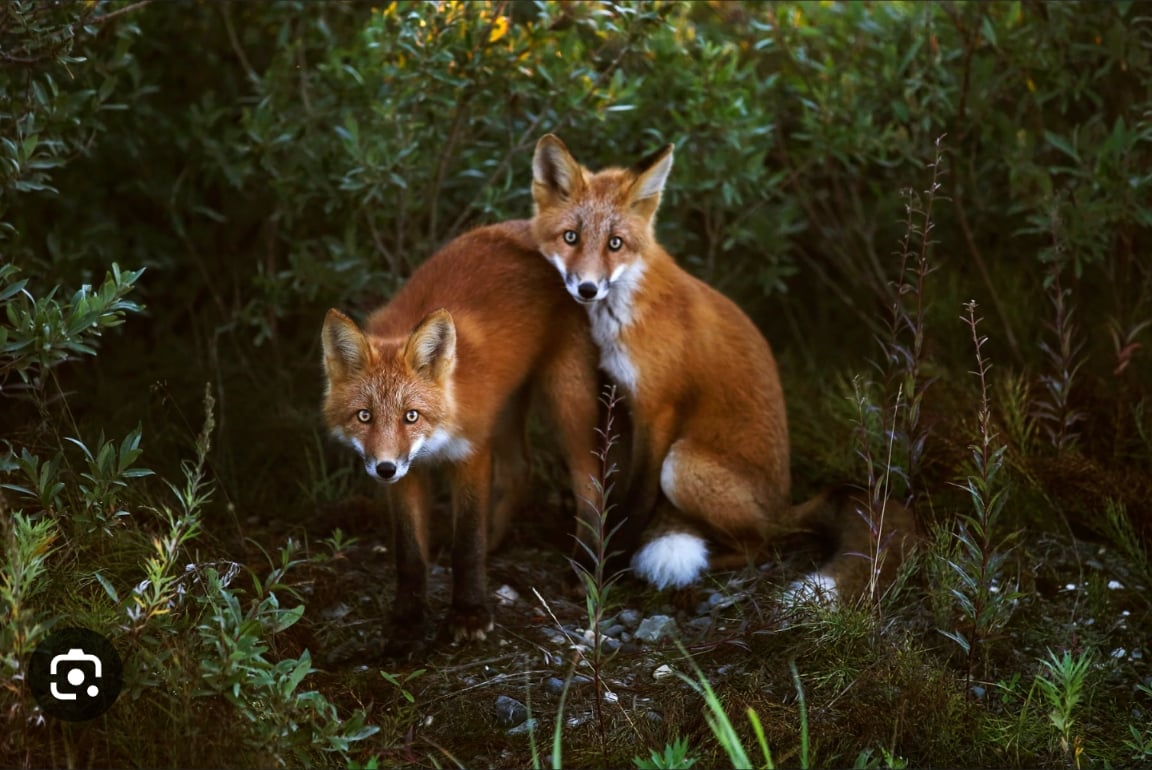
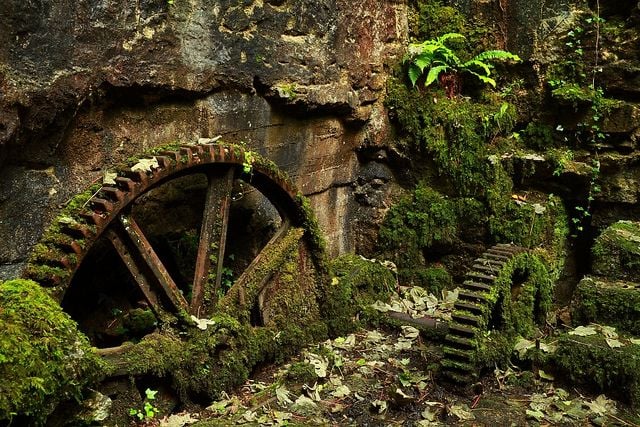

And he knows he’s the boss! I have a 4K video of him, too. I’ll see if I can upload it somewhere and share it here